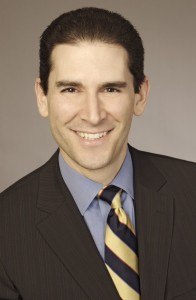Driven by optimistic expectations about market-share growth, property/casualty insurers are hiring talent at the fastest clip in years, according to results of a recent labor study revealing that two-thirds of insurers plan to boost staffing in 2015.
And among the most sought-after hires are specialty commercial lines underwriters and claims professional across P/C lines, according to Greg Jacobson, chief executive officer of The Jacobson Group and Jeff Rieder, partner and leader of Ward Group, whose firms conducted the Semi-Annual U.S. Insurance Labor Outlook Study.
All types of insurers—P/C and life/health—are included in the study’s overall finding that 66 percent of insurers plan to add to their staffs this year—the highest level ever recorded for the survey since 2009, Rieder said during a webinar presenting the results. But P/C insurers really drive the figures, according to Jacobson, who noted that they made up that 79 percent of all 105 respondents
“We’re seeing the hottest P/C market since before the recession as companies are doing everything they can to add to staff in order to support their anticipated or actual growth,” Jacobson said. He noted that while 62 percent of P/C carriers said they planned to add staff a year ago when the study was conducted for 2014, the actual 63 percent of P/C companies that did the hiring brought on double the number of people they anticipated.
 On the other hand, among companies that had planned to reduce their workforces in 2014, more actually slashed headcounts above planned amounts than below them, Jacobson said. “My view on that is that it’s become clearer who the winners and the losers are in the drive for market share,” he said. “Those companies that are not producing profitable growth are losing staff pretty quickly.”
On the other hand, among companies that had planned to reduce their workforces in 2014, more actually slashed headcounts above planned amounts than below them, Jacobson said. “My view on that is that it’s become clearer who the winners and the losers are in the drive for market share,” he said. “Those companies that are not producing profitable growth are losing staff pretty quickly.”
Rieder agreed. “I think it’s a self-fulfilling prophecy,” he said. Referring to recent news in the P/C sector about companies expanding risk profiles and spreading out geographically, “we see particularly in commercial markets that companies that are more profitable also…tend to be the ones that are growing their product and geographic footprint at a greater rate.”
Jacobson believes that some M&A activity results from the level of difficulty carriers encounter when they try to “acquire talent to get into specialty markets specifically.”
Fueling hiring expectations this year are expectations of revenue growth, said Rieder, noting that 88 percent of P/C companies expect to increase their revenue in 2015—and most say that the driver of revenue growth will be increased market share.

The two men also presented survey figures indicating the likelihood of increasing staff by function for different types of P/C insurers and the level of recruiting difficulties for various positions.
Underwriting and Technology
Tallying survey results for all types of insurance companies taken together, technology is the function where carriers expect to make the most hires, but for the P/C commercial segment, in particular, underwriters are seeing the highest demand.
For the remaining segments, carriers are hiring to consolidate technology platforms or to support multiple platforms, Rieder said.
Turning to recruiting challenges, Jacobson said that all positions except actuarial, executive-level positions and analytics roles became harder to fill over the last year, according to survey respondents, who score the degree of difficulty on a 1-10 scale. The average “difficulty” score from those three areas fell slightly, but still remained in the 6.0-7.0 range. Noting that average scores above 5.0 indicate positions that are “difficult or moderately difficult” to fill, Jacobson observed that “while it got a little bit easier” to fill jobs in these three areas in 2014, “it’s not close to being easy— and everything else got more difficult.”
“There are certain disciplines that are close to 9 or 10,” he said, highlighting commercial underwriting in excess and surplus lines as an area where “it is very very difficult to find people.”
The same is true for senior IT jobs and the most senior executive roles on carrier management teams. “We’re seeing more and more retirements—anticipated because of aging demographics of the industry. And there just aren’t enough people to take on senior level roles in the industry,” he said.
In the last year-and-a-half, The Jacobson Group has been involved in 20-25 CEO searches for P/C companies, “and in most cases it was external candidate that ended up getting the job,” he reported, referring to candidates external to the company rather than the industry.
To become a member, visit https://www.carriermanagement.com/signup/
“I’m not necessarily an endorser of that. I’m an endorser of [hiring for] skills rather than for experience. But the industry has generally not looked outside the industry very often,” he said.
Rieder noted that every time Ward and Jacobson have performed their joint survey, technology has ranked as a top-three area in terms of recruiting difficulty. And 2015 was no different, with technology coming in at No. 2 behind actuarial, and in front of executive placements and analytics professionals on the difficulty scale.
According to Rieder, a growing issue in the technology area is loss of talent to companies outside the industry, particularly on the East and West coasts where financial firms and dot-coms recruit them away.
Insurers are losing talent “due to their inability to beat on a compensation standpoint,” he said, noting that as his firm monitors compensation levels going forward, he anticipates that technology will outpace other functions in terms of annual merit increases and use of long-term incentives as insurers try to retain that talent.
Claims Professionals in Demand
For the P/C industry overall, the claims function “has bubbled back up to No. 2 spot” as the second-most-likely area for staff increases in 2015, Rieder said. Noting that underwriting had been holding the No. 2 and No. 3 spots for last several surveys, he noted that while underwriting now ranks No. 5, there is a significant difference between personal and commercial lines.
Echoing Jacobson’s earlier observations, Rieder said E&S and other specialty areas are experiencing a lot of growth in commercial underwriting roles as carriers seek new areas of growth.
But what explains the reemergence of claims as an in-demand function, especially among small carriers?
 Jacobson explained that after the economic collapse in 2008 and 2009, the claims function has greatest decline in functional staff. “Adjusters were let go. Companies felt that it was better for them to use a variable model of using third-party adjusters. They were looking for easy cost savings.”
Jacobson explained that after the economic collapse in 2008 and 2009, the claims function has greatest decline in functional staff. “Adjusters were let go. Companies felt that it was better for them to use a variable model of using third-party adjusters. They were looking for easy cost savings.”
“What ended up happening was there was such a great decline in staff that for many of them it very difficult for them to [rehire] those people because those claims adjusters found jobs in other industries.”
He said there was reduction of roughly 25 percent of the total adjusters in the P/C industry around 2011 or so. “There’s just not enough talent to fill all the open positions, which is becoming a significant problem in the industry.”
Rieder went on to speak about the lack of success that carriers have had with a large number of claims system replacement projects undertaken across the industry in recent years. While the new systems required adjusters to spend a lot more time to entering data, giving greater insights on claim information and possibly reducing indemnity costs, “they have not created the type of productivity gains [the carriers] hoped to see.”
Reviewing some historical data from the Jacobson/Ward Labor Surveys for the past six years, Rieder noted significant jumps in the indicated likelihood of increasing staff in claims and technology in each successive year since 2010. Comparing responses for 2014 and 2015, however, Rieder noted that the likelihood of hiring underwriters and sales/marketing professionals has decreased this year.
“It does appear that companies took the opportunity in 2014 to make the significant increases in staff…given that we are beginning to anticipate some softening, or at least not as hard market opportunities this year in 2015, that may be reason we’re seeing this dampening effect on the sales, marketing and underwriting function,” he reasoned.
About the Survey
Overall, the Jacobson/Ward survey for 2015 encompassed 120,000 employees in the U.S insurance carrier employment market, weighted to the P/C industry (at roughly 79 percent of respondents) and toward regional carriers (at 64 percent) with the average number of employees per respondent coming in at 1,165.
Across all types of insurers, the most common percentage increase in staffing levels is 2-4 percent, selected by 32 percent of respondents; roughly 29 percent expect to maintain the current staffing level, and another 15 percent expect to increase the overall employee count by less than 2 percent.
Sharing some information beyond the survey during the webinar, Jacobson and Rieder noted:
- The unemployment rate for the insurance industry is 2.3 percent, according to the Bureau of Labor Statistics.
- Voluntary turnover is in the 7-9 percent range in the industry. It used to be 4-7 percent.
- Temporary employees are becoming a large part of the economy and the insurance industry, with the penetration rate just over 2 percent of the U.S. economy overall, according to BLS.
- Within the insurance industry, there is an expansion in definition of what temporary employment looks like, according to Jacobson. “We are seeing it more significantly swim upstream into more expertise-focused people than in the past,” he said. “We provide a lot of actuaries on a contract basis, for example.”
For more survey highlights, download the full insurance labor market study results summary. For commentary, view the recorded webcast.
About The Jacobson Group
The Jacobson Group is a global provider of insurance talent. For more than 40 years, we have been connecting insurance organizations with professionals from the board room to the back room on both a permanent and temporary basis. Further information is available at jacobsononline.com.
About Ward Group
Ward Group performs benchmarking and best practices studies for insurance companies. The firm analyzes staff levels, compensation, business practices and expenses for all areas of company operations and helps insurers measure results, optimize performance and improve profitability. For more information about Ward Group, visit www.wardinc.com.





















 Market Softening Accelerates During 1/1/2026 Re Renewals
Market Softening Accelerates During 1/1/2026 Re Renewals  Why the Middle Market Matters and How Insurers Can Capture It
Why the Middle Market Matters and How Insurers Can Capture It  Nearly Half of 100 Largest P/C Insurers Destroy Value: ACORD
Nearly Half of 100 Largest P/C Insurers Destroy Value: ACORD  First Atlantic Hurricane Forecast for 2026 Suggests Season Close to 30-Year Norm
First Atlantic Hurricane Forecast for 2026 Suggests Season Close to 30-Year Norm 















